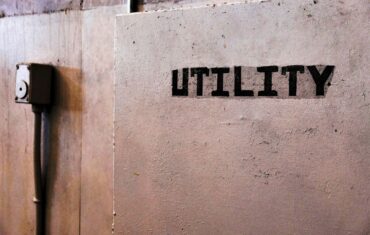Land surveys are an essential component of property ownership and development, yet they remain one of the most misunderstood aspects of real estate. Land surveys are a nuanced field that has its fair share of myths and misunderstandings and in the realm of land ownership, boundaries, and property rights, misconceptions can lead to costly mistakes and legal disputes. In this blog, we provide clarity and demystify the common misconceptions surrounding land surveys.
Misconception 1: Surveys Are Only Necessary for Large Properties
Some believe that land surveys are only needed for large plots of land or for rural areas. In reality, surveys are important for properties of all sizes to prevent boundary disputes and ensure accurate property descriptions. Let’s say you own a small residential property with a compact backyard. You want to install a fence to create a safe and private space for your family, or you plan to add landscaping features like a garden, patio, or a small shed.
In your mind, you have a clear idea of where your property ends and your neighbor’s begins. You may even have a friendly rapport with your neighbors, so property boundaries seem like a non-issue.
But here’s the reality check: Without the precision of a land survey, you’re operating on assumptions, not facts. Property lines aren’t always as straightforward as they seem. Over time, landscaping changes, soil erosion, or the subtle shifts of time can make it difficult to distinguish where one property ends and another begins.
This seemingly harmless discrepancy can escalate into more significant issues. What if, unbeknownst to you, your fence ends up infringing on your neighbor’s property, or you unknowingly encroach upon an easement meant for utilities? A simple landscaping project becomes a potential source of tension and disagreement. Furthermore, not all property owners may be as amicable or understanding as your current neighbors. When properties change hands, or disputes arise, the boundaries become more than just lines on a map.
The survey is not just for you to know where your property lines are, it’s also to clarify and simplify your relationship with your neighbors.
Are Land Surveys Needed for Townhomes or Condos?
What if you’re the owner of a townhome, part of a close-knit community where properties are closely nestled together, and the boundaries between units may not seem as ambiguous? The idea of a land survey might appear even more superfluous, right?
In reality, townhomes are a perfect example of where the importance of land surveys may be underestimated. Townhomes are typically characterized by shared walls and common areas. While this communal living arrangement offers many advantages, it can also introduce complexities in property rights and responsibilities that necessitate the precision of a land survey.
For instance, suppose you’re planning to add an extension to your townhome, install a new patio, or even renovate the shared garden area. Without a survey, it’s challenging to confirm where your property begins and ends. Property lines aren’t limited to just the exterior walls; they may extend to shared walls, fences, or green spaces. Uncertainties about these boundaries can lead to disputes with neighbors and the homeowners’ association.
Furthermore, the townhome’s legal descriptions and the allocation of common areas or easements can be intricate. A land survey is your key to understanding these nuances, ensuring that you don’t encroach on shared spaces or breach community guidelines. It helps preserve your harmonious living environment and your property’s market value.
So, whether you’re managing a sprawling countryside estate or nurturing a cozy urban haven, the worth of a land survey is undeniable. It doesn’t just outline your property’s boundaries; it safeguards your interests, offers peace of mind, and solidifies your property’s value.
Misconception 2: Property Lines Are Always Clear
It’s a common assumption that a land survey isn’t needed because property lines should be easily visible on the ground by anyone who cares to take a look. After all, what could be simpler than a clear, unmistakable marker, like a fence, that separates your land from your neighbor’s? However, relying solely on visible markers can lead to unexpected surprises and potential disputes. The truth is, ensuring that property lines remain clear and unambiguous often calls for a closer examination and the expertise of a land surveyor.
Changes in landscape, natural features, and previous property improvements all contribute to the challenge of precisely delineating property lines.
Nature’s Role
Nature, for example, plays a significant role in altering property lines. Consider the gradual yet profound impact of soil erosion. As the earth beneath your property shifts over the years, especially during heavy rains, it can subtly reshape the contour of your land, making previously defined boundaries less apparent.
Consider a home nestled near a gently flowing stream. Over the years, the water’s natural course shifts slightly due to erosion, causing the once pristine backyard to lose a foot or two of land. The homeowner, unaware of this gradual change, continues to mow their lawn as they always have. As a result, they inadvertently encroach upon the neighboring property. Without a survey to accurately identify the property boundaries, this small but significant alteration in the landscape can lead to disputes and discord with the neighbor.
The growth of trees and shrubs can also create ambiguity. Over time, the vegetation might expand its reach and grow in such a way that it overshadows the markers that once delineated your property’s edge. Without a survey, these changes can lead to discrepancies and, potentially, disputes.
Previous Property Improvements’ Impact on Boundaries
Moreover, many property owners have made changes or additions without considering the precise boundaries of their land. Whether it’s a fence, a garden shed, a driveway extension, or a pool, these improvements can lead to a visual discrepancy between your understanding of your property’s limits and the legal reality. Only a land survey is able to accurately determine property boundaries.
Misconception 3: Old Surveys Are Sufficient
Some people assume that if a property has had a survey in the past, there’s no need for a new one. However, property boundaries and features can change over time due to factors such as erosion, construction, and natural shifts. An outdated survey may not reflect the current state of the property.
Using old land surveys can present various risks and challenges, and it’s essential to understand that relying on them is a prudent practice.
Read More: 4 Reasons to Consider Getting a New Land Survey Before Closing
Misconception 4: A Survey Guarantees No Boundary Disputes
While a survey significantly reduces the risk of boundary disputes, it doesn’t guarantee that disputes won’t arise in the future. Legal interpretations, neighboring developments, and other factors can still lead to disagreements.
Property rights, laws, and the environment are subject to change, and these changes can give rise to unexpected disputes. However, having a recent and accurate land survey is your best line of defense. It serves as the foundational document for addressing any future conflicts and ensuring your property rights are upheld to the fullest extent of the law, even in the face of changing circumstances and interpretations.
Misconception 5: Boundary Monuments Are Always Accurate
Boundary monuments, such as survey stakes, pins, or markers, are intended to represent the accurate positions of property boundaries. However, their accuracy can vary depending on several factors:
Surveyor’s Skill and Equipment: The accuracy of boundary monuments largely depends on the skill and expertise of the surveyor who placed them. A qualified and experienced surveyor using modern surveying equipment is more likely to establish precise boundaries.
Survey Date: Over time, boundary monuments may shift or deteriorate due to natural forces, such as erosion, settling, or changes in vegetation. This can affect their accuracy, especially if they haven’t been maintained or replaced periodically.
Legal Records: Boundary monuments should ideally match the descriptions and coordinates recorded in legal documents, like deeds and land surveys. Discrepancies between the legal records and the physical markers can lead to boundary disputes.
Survey Errors: Surveying errors can occur, and mistakes in the placement of boundary monuments are not unheard of. Human error, miscalculations, or misinterpretations of historical records can all lead to inaccuracies.
Monument Maintenance: The maintenance of boundary monuments is crucial. Over time, markers can be buried, covered by vegetation, or damaged. Regular maintenance and replacement can help preserve their accuracy.
Environmental Factors: Natural events like earthquakes or landslides can disrupt the accuracy of boundary monuments by physically moving or damaging them.
To ensure the accuracy of boundary monuments, it’s essential to hire a reputable and qualified surveyor to establish and maintain them. Property owners should also periodically check and maintain these markers to prevent discrepancies and potential boundary disputes. Legal records and surveys should be consulted to verify the positions of boundary monuments and ensure they align with property boundaries as described in documents.
Misconception 6: Surveys are too expensive
Land surveys are often perceived as expensive, but it’s important to consider that this perception may not always align with the true value and necessity of these services. Land surveys are not just a one-time expense; they provide long-term benefits like:
- Encroachment prevention
- Resale confidence
- Legal clarity
- Neighbor relations
- Peace of mind
While the cost of a survey can vary depending on factors such as property size and complexity, it’s important to recognize that this expense is an investment in the long-term confidence of your property. It can ultimately save you from the potential financial and emotional burdens of property-related conflicts, making the decision to obtain a land survey a prudent and cost-effective choice for property owners.
Misconception 7: Surveys Are Only About Boundaries
While boundary determination is a significant aspect of land surveys, they can also include other information such as topography, easements, encroachments, and legal descriptions. A survey provides a comprehensive view of a property’s characteristics, ensuring that you’re well-informed about its potential and limitations.
Here’s what you need to know about the information land surveys offer beyond mere boundaries:
Topography: Land surveys provide valuable insights into the topography of your property. This includes details about the terrain, elevation changes, slopes, and natural features. Understanding the topography is crucial for land development, construction, and landscaping projects. It can influence decisions on where to build, where to install drainage systems, or where to plant gardens, all of which can greatly impact the functionality and aesthetics of your property.
Easements: Easements are legal rights that allow someone else to use a portion of your property for specific purposes, such as utility access or shared driveways. A survey will identify the location and extent of any easements on your property, helping you understand your rights and responsibilities, which can influence how you use and develop your land.
Encroachments: Surveys may uncover encroachments, which occur when a structure or feature from one property intrudes onto another. Knowing about encroachments is vital, as they can lead to boundary disputes and legal issues. A survey can help you address encroachments and take appropriate action to rectify the situation.
Legal Descriptions: Surveys include legal descriptions of your property. These descriptions are precise and legally binding, serving as the foundation for property records and transactions. They are essential when buying, selling, or developing land.
In essence, a land survey provides a comprehensive view of your property’s characteristics. It’s not merely about fixing boundaries but about offering a detailed understanding of your land’s topography, any legal easements, encroachments, and a precise legal description. Armed with this information, you are well-informed about the full scope of your property, allowing you to make informed decisions about land use, development, and legal matters that may arise in the future.
Download our guide: How to Read a Land Survey
Misconception 8: GIS Data Replaces the Need for Surveys
In the era of Geographic Information Systems (GIS) and digital mapping, some may wonder whether professional surveyors are still essential. The answer is a resounding “yes.” While GIS data can be a valuable supplement to surveys, it does not replace the expertise of a professional surveyor. Geographic Information Systems (GIS) provide valuable spatial data, but they may not always be accurate or up-to-date. GIS data can be a useful supplement to surveys, but a professional surveyor’s expertise is still essential for precise boundary determination. Surveyors, with their specialized training and in-depth knowledge of local regulations, remain the gatekeepers of precise boundary determination. They ensure that your property lines are not just lines on a map but legally binding commitments.
Misconception 9: All Surveyors Provide the Same Quality of Work
Not All Surveyors Are Created Equal. Surveyors vary in their experience, training, and expertise. It’s important to hire a licensed and qualified surveyor who is familiar with local regulations and has a good reputation for accurate work. When in need of a land survey, seek out a licensed and qualified surveyor with a proven track record for accuracy and reliability. This step is essential to ensure that the survey you receive is trustworthy and holds weight in property transactions and legal matters.
Professional competence and local knowledge are invaluable assets for a surveyor. Experienced professionals are more likely to detect subtle boundary discrepancies, potential issues, and irregularities that a less-experienced surveyor might overlook. They understand the specific challenges and regulations of the area, ensuring that your survey complies with local laws and standards.
Furthermore, a reputable surveyor will use the latest surveying technology and methods to provide the most precise and reliable results. Their work not only defines your property’s boundaries but can also identify any encroachments or easements, allowing you to make informed decisions about your property.
In the world of land surveys, the old adage, “you get what you pay for,” certainly holds true. While it may be tempting to opt for a cheaper, less-experienced surveyor, the potential consequences of inaccuracies or oversights can far outweigh the initial cost savings. So, when selecting a surveyor, prioritize quality, professionalism, and a proven track record to safeguard your property rights and investments.
Misconception 10: Surveys Are Only Needed for Real Estate Transactions
While surveys are often associated with real estate transactions, they find applications in numerous other contexts. Below are just a few examples of situations where surveys play an indispensable role:
- Building a New Structure: When planning to construct a new building, a survey helps ensure that the structure complies with local zoning regulations and doesn’t encroach on neighboring properties.
- Adding Fences or Walls: If you intend to install a fence, wall, or other structure on your property, a survey can help you place it accurately within your boundaries.
- Revealing Any Right of Ways: Identifying and documenting any right of ways on your property, can affect property use, legal obligations, and neighborly relations.
Whether you’re dreaming of your dream home, launching a commercial venture, or resolving a neighborly disagreement, a current and accurate land survey is your guiding light.
Key Takeaway
Understanding the nuances of land surveys and dispelling common misconceptions is not just a matter of curiosity but a necessity for anyone involved in real estate, property development, or simply wanting to secure their property rights.
Related Blogs:










